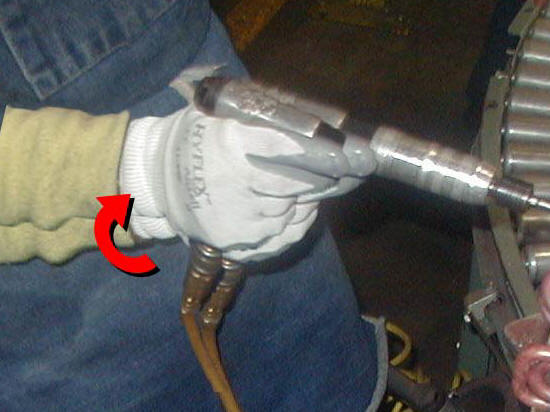 |
| Visible jerk when fastener bottoms out |
Background
Assemblers who use power fastening tools (such as powered screwdrivers or wrenches) often experience a jerk and shock to the wrist at the moment when the fastener is completely tightened. This sudden transfer of force is called “torque reaction” and is usually quite visible when it occurs. With sufficient exposure, the wrist can be injured.
Torque is the turning force of anything rotating around an axis (and a measure of that force). Rotating your forearm to turn a manual screwdriver involves torque, as does the spinning shaft of a power screwdriver.
Torque reaction is based on Newton’s Third Law, “For every action, there is an equal and opposite reaction.”
Torque requirements are often set for screws and bolts to reflect the exact amount of tightness needed to make them secure, without over-tightening.
Objectives
Reduce the shock delivered to the hand and arm by one or more prevention techniques.
Ideas and Options
Tool design and type
 |
 |
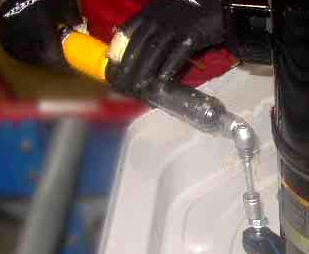 |
| Inline or straight handled | Pistol grip | Right angle |
Manufacturers of fastening tools have in recent decades devoted considerable research and development to designing equipment that does not transfer the shock to the wrist. Examples include automatic shut-offs and improvement to clutches within the tools.
The amount of torque reaction that affects the hands and arms is affected greatly by the type of tool, based on the length of the lever arm of the grip and thus the ability of the person to hold the tool and minimize the jerk when it occurs.
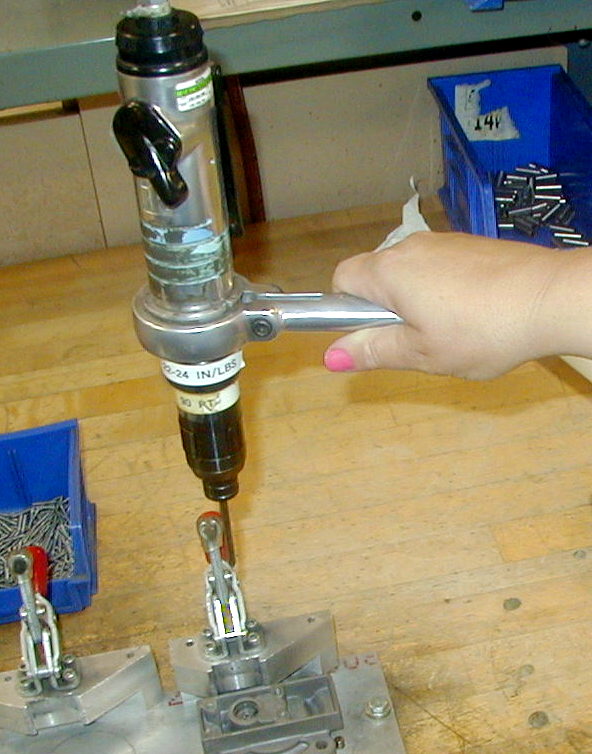
Second handle
Note that adding a second handle adds a lever arm that can help the person deflect the shock. In essence, it converts an inline tool into a pistol grip.
Torque arms
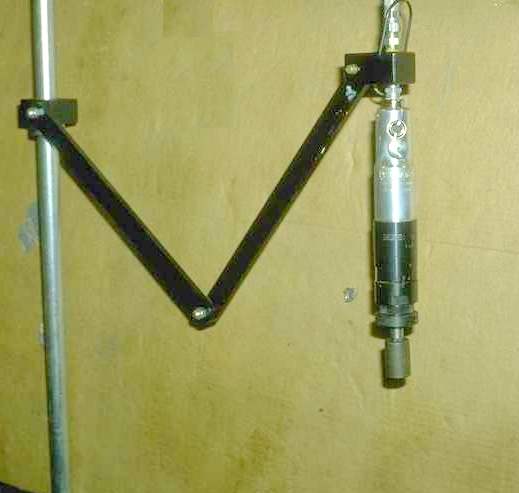 |
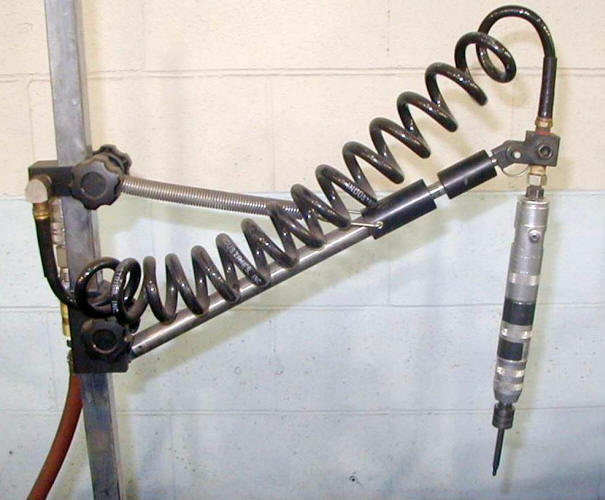 |
| Counterbalance arms with torque control |
This style of arm suspends the tool and is very flexible, allowing the tools to be moved in different positions and orientations. However, the arm doesn’t permit the tool to twist, thus absorbing the torque shock.
future
video clip of low profile flexible arm
Torque bars
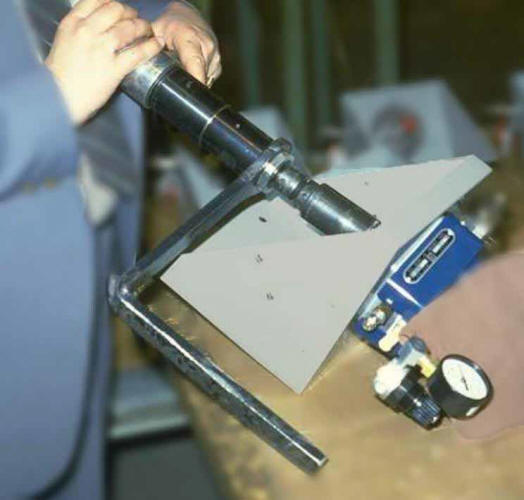 |
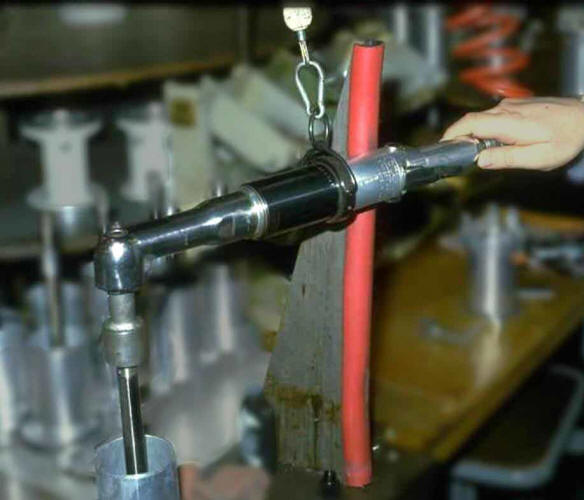 |
A judicitiously placed bar can absorb the shock. The bar can be attached to the tool, shaped to fit the application. Alternatively, a bar can be incorporated into the workstation.
Forearm brace
 |
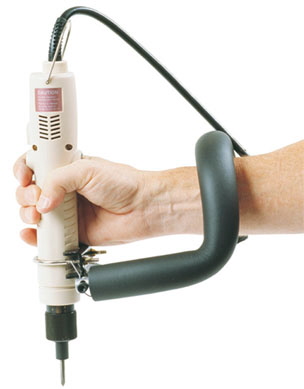 |
| DGI | Mountz |
A brace can used to transfer the shock from the tool to the forearm, which is more forgiving than the wrist itself. (The author has not personally evaluated these devices. They are shown as a potential option for improvement.)
Standards
A number of variables affect the shock in addition to the amount of torque itself:
- Tool inertial properties, mass moment of inertia, and tool geometry
- working position of employee (reach, height, etc.)
